#Nordic legends
Explore tagged Tumblr posts
Text






















"ZU NEUEN TATEN, TEURER HELDE" Götterdämmerung - R. WAGNER Here some Siegfrieds and Brünnhildes.
Peter Cornelius as Siegfried; Copenhagen, 1905
Charles Dalmores as Siegfried; Brussels, 1902
Ejnar Forchhammer as Siegfried; ?, ?
Paul Franz as Siegfried; Paris, 1925
Hans Grahl as Siegfried; Hamburg, 1934
Alois Hadwiger as Siegfried; Coburg-Gotha, 1907
Ottfried Hagen as Siegfried; Munich, 1908
Ernst Kraus as Siegfried; Berlin, ca. 1907
Gorrhelf Pistor as Siegfried; Bayreuth, 1931
Julius Pölzer as Siegfried; Munich, 1932
Erik Schmedes as Siegfried; Vienna, ca. 1910
Josef Schöffel as Siegfried; Karlsruhe, ca. 1921
Hans Tänzler as Siegfried; Karlsruhe, 1910
Jacques Urlus as Siegfried; Berlin ?, ca. 1907
Fritz Vogelstrom as Siegfried; Mannheim, ca. 1909
Hermann Winkelmann as Siegfried; Vienna, 1880
Marie Brema as Brünnhilde; London, 1897
Louise Grandjean as Brünnhilde; Paris, 1908
Felia Litvinne as Brünnhilde with Grane; Brussels, 1902
Katharina Senger-Bettaque as Brünnhilde; Berlin, 1898
Fanni Wahrmann-Schöllinger as Brünnhilde with Grane; Hannover, 1920
Hedwig Reicher-Kindermann as Brünnhilde; Leipzig, ca. 1886
#classical music#opera#music history#composer#bel canto#classical composer#aria#classical studies#maestro#chest voice#Götterdämmerung#Richard Wagner#Twilight of the Gods#Musikdrama#Der Ring des Nibelungen#The Ring of the Nibelung#The Ring Cycle#The Ring#Bayreuth Festspielhaus#Bayreuth Festival#Old Norse#Ragnarök#Norse mythology#German legends#Nordic legends#classical musician#classical musicians#classical history#opera history#history of music
37 notes
·
View notes
Text

Gullveig's Return
"Burned, broken, but never lost. She speaks in embers and sees what the gods fear."
They called her Heiðr, the Shining One, yet her fate was forged in fire. Three times she burned, and three times she rose—each time stronger, her veins filled not with blood, but with the molten whispers of Seiðr magic. Now, clad in blackened ceremonial armor, adorned with golden runes, and flanked by two crows, she walks the line between prophecy and defiance.
She is Gullveig reborn, a forgotten Vanir sorceress who sees the unraveling threads of fate, knowing that the gods themselves fear what she might reveal.
She carries the Scroll of Ash, an artifact that holds the rewritten history of those who tried to silence her. The words on its pages shift and burn, revealing truths only to those who dare to seek them.
In the fields of battle and the halls of kings, her name is whispered in awe and fear.
#norse mythology#dark fantasy#digital painting#seidr magic#fantasy art#nordic legends#mythological art#ancient magic#black crows#prophecy#character design#dark aesthetic#seeress#gullveig#fire and fate#norse sorceress#cinematic fantasy#nordic folklore#witch of the north#epic fantasy
16 notes
·
View notes
Text
FairyTale 101: Myths & Legends - Gryla (The Winter Witch)
“Far in the cold regions of Jotunheim, the Frost Giants dwell, their icy hearts as unyielding as the frozen lands they call home.” — Inspired by Norse Mythology The Frost Giants, or Jötnar, are among the most fascinating and fearsome beings in Norse mythology. Representing the chaotic and untamed forces of nature, these colossal beings play a central role in the mythological tales of the Norse…
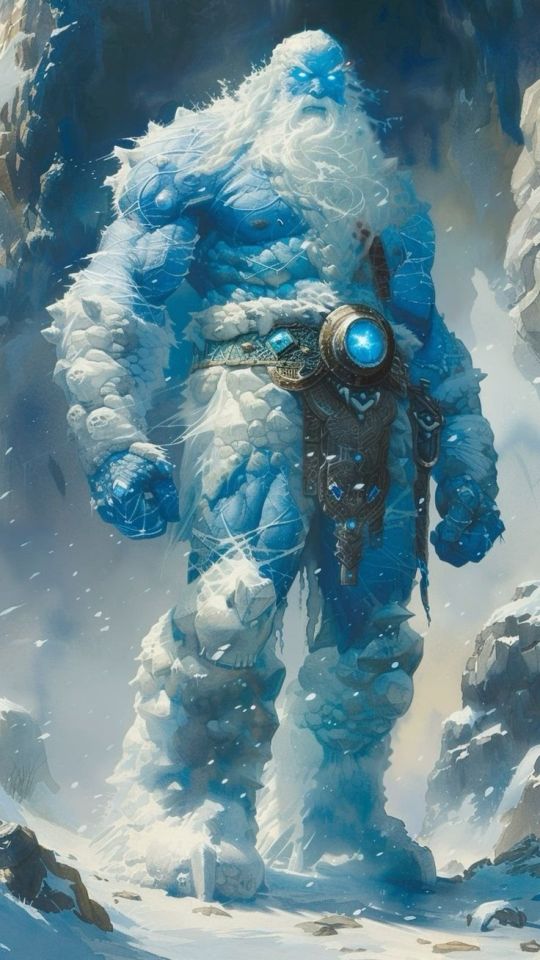
View On WordPress
#Blu Moon Fiction#Frost Giants#Jötnar#Jotunheim#Loki#Marvel’s Thor#mythical creatures#Mythology and Folklore#Neil Gaiman#Nine Realms#Nordic legends#Norse gods#Norse mythology#Prose Edda#Ragnarök#Thor#What&039;s Your Story#Ymir
6 notes
·
View notes
Text
youtube
Hervor: The Warrior Heiress of a Cursed Sword
Who was Hervor? A shepherdess turned warrior, ready to challenge the dead for a cursed sword. Discover her incredible story!
Hervor, the daughter of a legendary berserkr, learned that her destiny was tied to Tyrfing, a sword forged by dwarves and steeped in a terrible curse. In this video, we explore her extraordinary transformation from shepherdess to warrior, her journey to the island of Samsø, and her bravery in reclaiming what was rightfully hers. We uncover the ancient legends surrounding the sword Tyrfing, its dark power, and how Hervor faced epic challenges to prove herself worthy of her inheritance. Join us on this journey through Norse mythology, where honor, courage, and mystery intertwine. By the end of the video, you'll understand why Hervor's story is one of the most fascinating in Nordic tradition.
#Hervor#Hervors legend#Nordic legends#Nordic tradition#Norse mythology#Norse myths#Norse saga#Tyrfing#Viking heritage#Viking heroes#Viking warriors#cursed swords#epic tales#hervor#hervor meaning#hervor significado#hervor viking#hervorbringen englisch#hervorhebung#hervortretend#imagenes de hervor de sangre#legendary warriors#mythological dwarves#sword stories#viking hervor ship#youtube#mythology#videos#Youtube
0 notes
Text

Brünnhilde the Valkyrie by Arthur Rackham
#arthur rackham#brünnhilde#valkyrie#valkyries#art#the rhinegold and the valkyrie#richard wagner#wagnerian#norse mythology#germanic mythology#brunhild#brynhildr#germanic#germanic heroic legend#shieldmaiden#der ring des nibelungen#europe#european#northern europe#nordic#völsunga saga#nibelungenlied#the ring of the nibelung#amazon#amazons#brunhilda#scandinavia#scandinavian#norse#spear
5K notes
·
View notes
Text
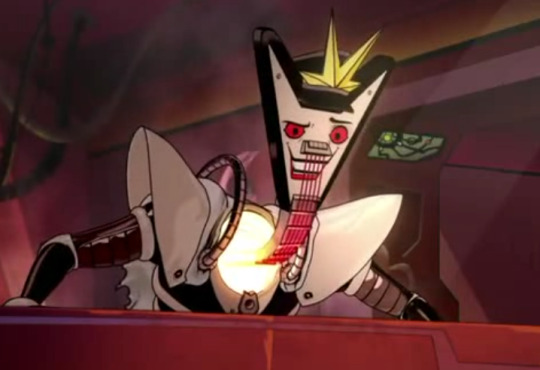
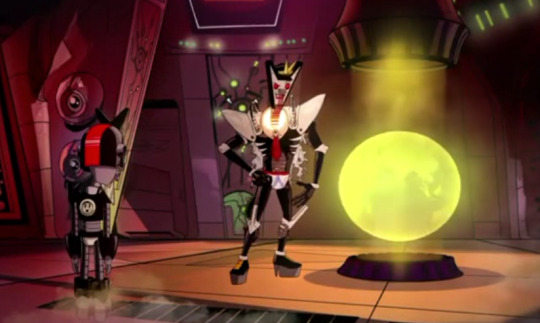
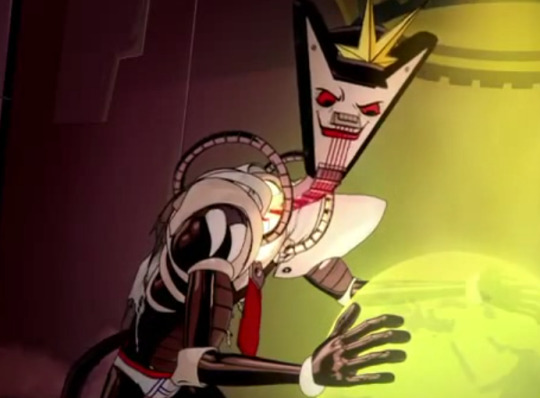


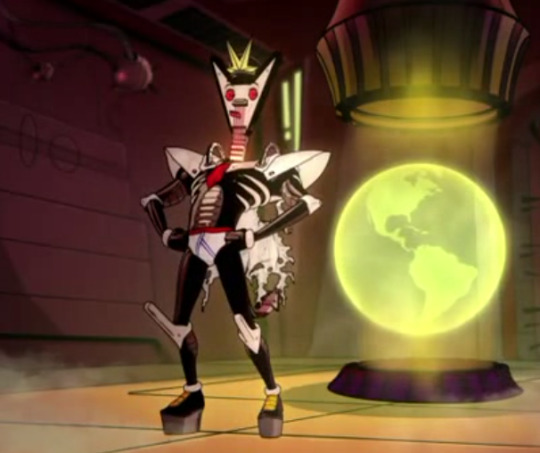
i am astonished that Tumblr hasn't immediately jumped on Nordic Bunny from Shred Force - look at his design!!!! the guitar-body-head, the lipstick, the cat eyes and tail, the tattered cape and platform boots...serving so much cunt that Disney couldn't even greenlight it 😭🤘
#what the fuck IS HE besides an alien. is he an actual guitar brought to life by some rock god magic???#is he a malevolent robot created by some nefarious elder rock-and-roll legend?????#i need ANSWERS RIGHT THIS MINUTE#nordic bunny#shred force#shredforce#starleskatalks
617 notes
·
View notes
Text

This illustration is based on the old Finnish legend where it was believed that the northern lights were caused when the tail of a fox would swipe across the frost, causing sparks to fly to the sky and light up in colors, creating the northern lights.
#digital art#digital illustration#digital drawing#art#drawing#illustration#procreate art#lineart#fantasy art#fantasy#Legends#legend#nordic folklore#folklore#fox#artic fox#northern lights#finnish#finland#landscape#night#night sky#stars#winter#finnish lapland#lapland#winter landscape#winter forest#mountains
126 notes
·
View notes
Note
Beyond honey candies, are there any other candys you enjoy on the occation?

#He would be that guy ok#Give him some salmiak he'll love it#the nordics are cheering#revali#tears of the kingdom#breath of the wild#age of calamity#legends of zelda#rito#rito village
74 notes
·
View notes
Text



Norse Skins by Elisa Orloff/orloffel
Loki Moira (tumblr/artstation)
Jörð Zarya (tumblr/artstation)
Skadi Mei (artstation)
like and reblog the original posts linked above, not this post
#moira#zarya#mei#overwatch#fan skin#fanskin#Elisa Orloff#orloffel#myth/legend#nordic#north european culture#fantasy
55 notes
·
View notes
Note
do you think there is a genre of "found footage" in hetaverse of people wearing go-pros or hidden camera to catch norway on tape
LOL, okay, there must be public photos of Norway out there. He just coldly turns down selfies or something, he doesn't want to be bothered
#great mysterious legends like big foot - loch ness monster - norway.. no one has caught them#imagine the news have to use the same fucking photo each time of nor bc he refuses to take a new one#dude has just one good photo and uses it everywhere#if there are forums and conspiracies about the nations how do the “finland is not real” conspiracists explain fin's existence lmao#hws nordics
33 notes
·
View notes
Text

Ghost of a long dead warrior
Art for The Elder Scrolls: Legends
Art by Nuare Studio
#Nuare#Nuare Studio#art#the elder scrolls#concept art#tes#skyrim#nord#nordic ruin#spirit#ghost#warrior#the elder scrolls legends#enemy design
61 notes
·
View notes
Text




„GÖTTERDÄMMERUNG“ R. WAGNER „HAGEN, WAS TATEST DU?“ Siegfried's death
Julius Pölzer as Siegfried; Munich, 1932
Julius Pölzer as Siegfried; Munich, 1932
Josef Kalenberg as Siegfried and Anny Konetzni as Brünnhilde; Vienna, January 1937
Josef Kalenberg as Siegfried and Anny Konetzni as Brünnhilde; Vienna, January 1937
#classical music#opera#music history#bel canto#composer#classical composer#aria#classical studies#maestro#chest voice#Götterdämmerung#Twilight of the Gods#Richard Wagner#Musikdrama#Der Ring des Nibelungen#The Ring of the Nibelung#The Ring Cycle#Bayreuther Festspielhaus#Bayreuth Festival#Old Norse#Ragnarök#Norse mythology#German legends#Nordic legends#classical musician#classical musicians#classical history#opera history#history of music#historian of music
6 notes
·
View notes
Text

Alviva, The Watcher of Fates
She does not carry the fallen to Valhalla—she carries their stories. In her luminous armor, cityscapes rise and fall, reflecting the lives she watches from above. A Valkyrie not of war, but of fate itself. Somewhere, in the book she writes, a name is already inscribed. Will it be yours?
#norse mythology#valkyrie#fantasy art#digital art#mythology art#glowing armor#cityscape#ethereal warrior#nordic legends#divine feminine#sky guardian#celestial being#artistic illustration#mythical figures#fantasy illustration#norse legends#mythical art#digital illustration#fantasy characters#myth and legend
9 notes
·
View notes
Text



RIP TikTok. I don’t think I would’ve cosplayed as my two favorite fictional girls without you 💖💖 Thanks for the memories.
#rip tiktok#brütal legend#ophelia brutal legend#destroy all humans 2 reprobed#natalya ivanova#destroy all humans#cryptosporidium 137#double fine#thq nordic#black forest games#cosplayers of tumblr#cosplayers of tiktok#brutal legend#crypto 137#crypto destroy all humans#destroy all humans natalya#cosplay#gamer girl#cosplay girls
7 notes
·
View notes
Text
The Norse Cosmogony: From Ginnungagap to Ymir and the Birth of the Gods
Introduction
Norse mythology offers us a fascinating vision of the origin of the universe, a narrative rich in symbolism and profound cultural meanings. In a world where the struggle between order and chaos is constant, Norse myths tell us how the cosmos was created from the fusion of primordial elements and how the forces of destruction and rebirth are inextricably linked. This story explores the birth of the Norse universe, the importance of figures like Ymir and Audhumla, and the central role of Ragnarök, the twilight of the gods, in the cyclical nature of existence.
The Birth of Ymir and Audhumla
Before time began, the primordial abyss of Ginnungagap existed between two extreme realms: the icy Niflheim in the north and the fiery Muspelheim in the south. This empty space, Ginnungagap, represented the duality between creation and destruction, between chaos and order—a central theme in Norse cosmology. In the heart of Ginnungagap, fire and ice met, generating an extraordinary phenomenon. From this event, Ymir was born, the first of the frost giants, a colossal creature born from pure chaos, symbolizing primordial disorder.
Alongside Ymir, another fundamental being appeared: the sacred cow Audhumla, born from the fusion of the ice of Niflheim and the heat of Muspelheim. Audhumla is considered so important in Norse cosmology because she not only nourished Ymir, allowing him to survive, but also contributed to the creation of the first god, Buri, symbolizing the ability of primordial forces to generate life and order from chaos. Also born from the fusion of elements, Audhumla played a crucial role in nourishing Ymir with her abundant milk and revealing the first god, Buri, by licking the ice-covered rocks. This seemingly simple act symbolized the slow and gradual creation of the universe from primordial forces—a parallel to other creation myths, such as the Greek myth of Chaos, from which Gaia and other primordial elements emerged.
The Symbolism and Cultural Value of Audhumla
The figure of Audhumla is not only relevant to the creation of Ymir and Buri. Her ability to nourish and give life reflects the values of fertility and sustenance that were deeply rooted in Norse culture. In an era where survival depended on nature and sustenance, the symbol of the cow represented the indissoluble bond between humans and the natural environment. Moreover, the act of licking the ice to bring forth Buri has symbolic meaning related to the creation of order from chaos—a representation of the process of civilization and the origin of the gods who would shape the destiny of the world.
The Birth of Buri and the Creation of the World
With the birth of Buri, the Norse universe began to take shape. He is the ancestor of the Æsir gods, among whom the most famous is Odin, son of Borr. Odin, along with his brothers Vili and Vé, decided to create the world by sacrificing Ymir and using his body to shape the earth, the sky, and the sea. Descriptions of Norse cosmology emphasize the interconnectedness of all these elements. Ginnungagap, as the place of origin, represents the starting point of creation. The roots of the world tree, Yggdrasil, connect all nine worlds—Asgard (the abode of the gods), Midgard (the world of humans), Helheim (the realm of the dead), Jötunheim (the land of giants), Vanaheim (the home of the Vanir), Alfheim (the land of the light elves), Svartalfheim (the abode of the dark elves), Niflheim (the realm of ice), and Muspelheim (the realm of fire)—creating a universe where everything is intimately interconnected.
The Theme of Chaos and Order
This mythological story is more than just a narrative about the origins of the universe. It represents the ongoing struggle between chaos and order, a battle that will culminate in Ragnarök, an event laden with cultural significance for the Norse people, as it represents the inevitability of the cycle of destruction and rebirth. During Ragnarök, the forces of Muspelheim and Niflheim will converge once again on Ginnungagap to destroy and regenerate the world, thus emphasizing the cyclical and inevitable nature of existence. This event has deep importance in Norse culture, representing not only the end of the known world but also the hope for rebirth. The legend of Ragnarök has been revisited multiple times in folklore and modern literature, inspiring works such as epic sagas, fantasy novels, and even films, highlighting its enduring relevance in our collective imagination. Ginnungagap is not just the beginning of everything but also a symbol of an endless cycle—a concept reflected in the Norse view of time as an eternal cycle of destruction and rebirth.
The Balance of Forces
The Norse creation myth is thus a profound reflection on the balance between opposing forces. Audhumla and Ymir embody this dichotomy: nourishment and growth on one side, chaos and primordial force on the other. Their connection symbolizes the interconnectedness of all beings, divine and mortal, in a universe where the boundary between order and chaos is always thin and vulnerable. An example of this balance is manifested in the myth of Loki, a deity who represents both chaos and the need for change. Loki often causes turmoil among the gods, but at the same time, his actions lead to new solutions and transformations, highlighting how chaos can be an integral part of cosmic order. This story invites us to consider not only the origin of life but also its fragile beauty and the inevitable return of chaos, which always lurks at the edges of the order established by the gods.
Conclusion
The Norse creation story, with its profound symbolism and interplay of opposing forces, continues to fascinate. Ginnungagap, Ymir, and Audhumla represent not only elements of myth but also archetypes of the struggles and balances that characterize life itself. Recognizing the importance of these stories allows us to reflect on the origins of the universe and the dynamics that still influence the world today and our understanding of it. Have we ever wondered how these ancient struggles between order and chaos might still mirror the challenges of our daily existence?
youtube
#Asgard#Audhumla#Creation of the World#Ginnungagap#Loki#Muspelheim#Myths and Legends#Niflheim#Nordic History#Nordic Legends#Norse Cosmogony#Norse Giants#Norse Gods#Norse Mythology#Norse Myths#Odin#Ragnarok#Thor#Viking Mythology#Ymir#birth of giants#norse paganism#ymir - heartsick#youtube#mythology#fantasy#videos#folklore#atrumvox#Youtube
1 note
·
View note
Text

#siegfried#sigurd#sigfrid#nibelungenlied#die nibelungen#der ring des nibelungen#völsunga saga#germanic heroic legend#norse mythology#germanic mythology#northern europe#art#nordic#norse#germanic#europe#european#scandinavia#scandinavian#germany#german#richard wagner#the ring of the nibelung#horn#sword#gram#balmung#nothung#heroes
170 notes
·
View notes